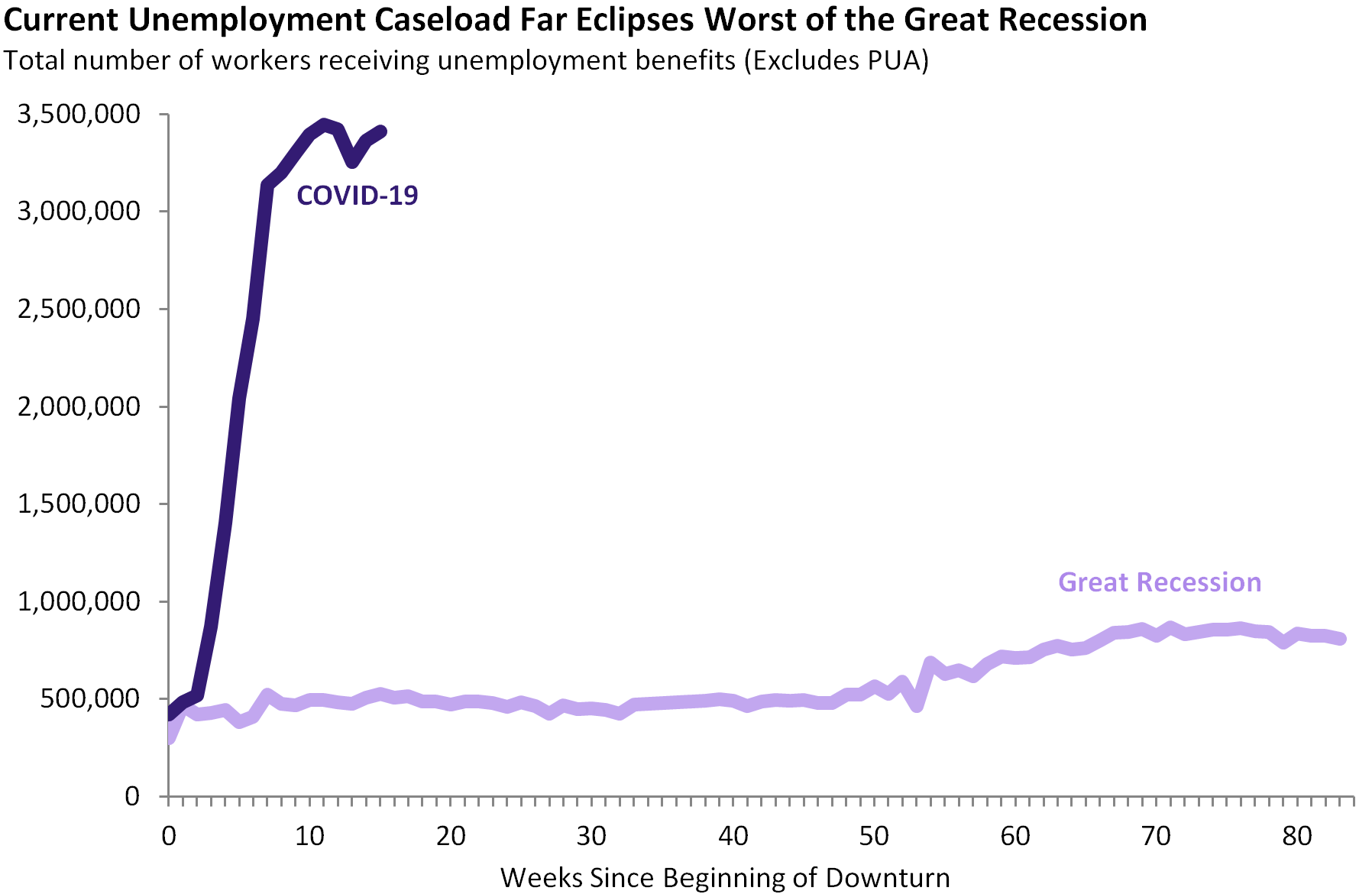As a result of the COVID-19 pandemic, California has experienced an unprecedented rise in unemployment since the beginning of March. Through March and April, the key measure that captured the impact of the virus on the state’s workers was the number of new unemployment claims being filed each week. Going forward, this number will still be important as a gauge of whether a second wave of business closures and layoffs is emerging. Equally important to track going forward, however, will be the level of continued claims—the total number of people receiving unemployment benefits in a given week. Should continue claims start to decline, it could signal that some businesses are bringing workers back. Should continued claims keep rising, however, it could signal that the state is in for a protracted slump.
Initial Claims Running a Bit Higher Than Recent Weeks. California processed 279,341 initial claims for regular unemployment insurance between June 21 and June 27. Initial claims in the past two weeks reflect an increase above levels seen during May and the first two weeks of June. During that time, weekly claims held steady in the neighborhood of 200,000 to 250,000. Weekly claims since mid-March have remained well above the record high prior to the COVID-19 outbreak of 115,462 in January 2010.
Continued Claims Inching Upward After Dipping Slightly in Early June. As of June 27, California had about 4.2 million workers receiving unemployment benefits. This includes about 3.4 million receiving traditional unemployment benefits and about 800,000 receiving Pandemic Unemployment Assistance—a new program created to expand eligibility for unemployment insurance to self-employed workers and others not typically eligible for the traditional program. After dipping slightly in early June, continued traditional unemployment claims have inched upward in recent weeks and are now near their peak COVID-19 level. For the sake of accurate historical comparison, the graph below shows only the traditional unemployment claims.


